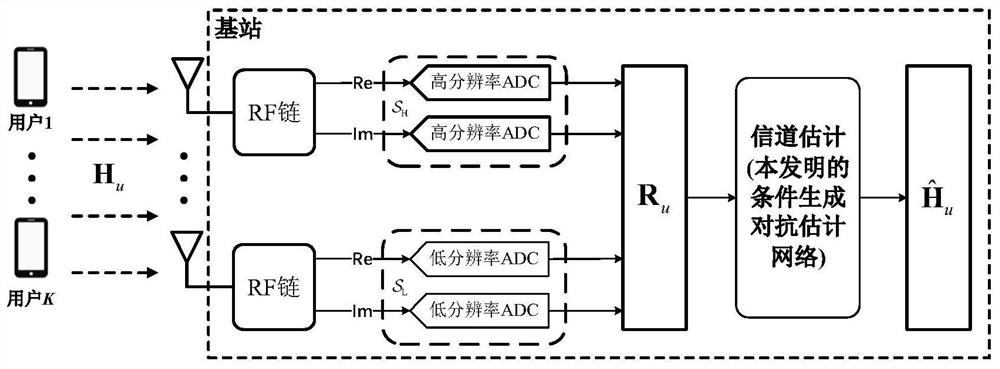Multi-antenna system channel estimation method based on deep learning
A multi-antenna system and channel estimation technology, which is applied in the field of multi-antenna system channel estimation based on deep learning, and can solve the problems of not studying the loss function, poor channel estimation results, limiting performance, etc.
- Summary
- Abstract
- Description
- Claims
- Application Information
AI Technical Summary
Problems solved by technology
Method used
Image
Examples
Embodiment Construction
[0050] The present invention will be further described below in conjunction with drawings and embodiments.
[0051] The structure of massive MIMO system with mixed resolution ADC is as follows figure 1 As shown, the base station is equipped with M antennas, which are divided into a high-precision ADC antenna set S H Antenna set S with low precision ADC L Two collections. S H and S L Satisfy and S H ∪S L ={1,2,...,M}. Each antenna is equipped with two ADCs to quantify the real part Re and the imaginary part Im of the received signal respectively, and there are K single-antenna users in the system. figure 2 A brief schematic diagram of the conditional generative adversarial network designed for the present invention.
[0052] The present invention designs a large-scale multi-antenna system channel estimation method based on deep learning. The method is implemented based on conditional generation confrontation network. The conditional generation confrontation network i...
PUM
 Login to View More
Login to View More Abstract
Description
Claims
Application Information
 Login to View More
Login to View More - Generate Ideas
- Intellectual Property
- Life Sciences
- Materials
- Tech Scout
- Unparalleled Data Quality
- Higher Quality Content
- 60% Fewer Hallucinations
Browse by: Latest US Patents, China's latest patents, Technical Efficacy Thesaurus, Application Domain, Technology Topic, Popular Technical Reports.
© 2025 PatSnap. All rights reserved.Legal|Privacy policy|Modern Slavery Act Transparency Statement|Sitemap|About US| Contact US: help@patsnap.com



